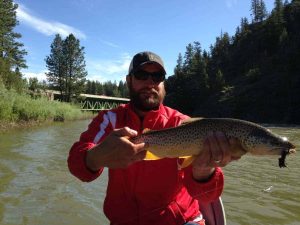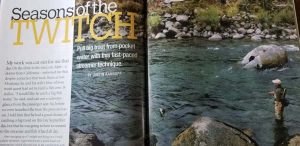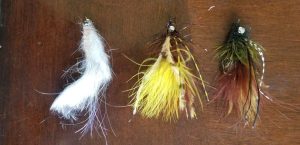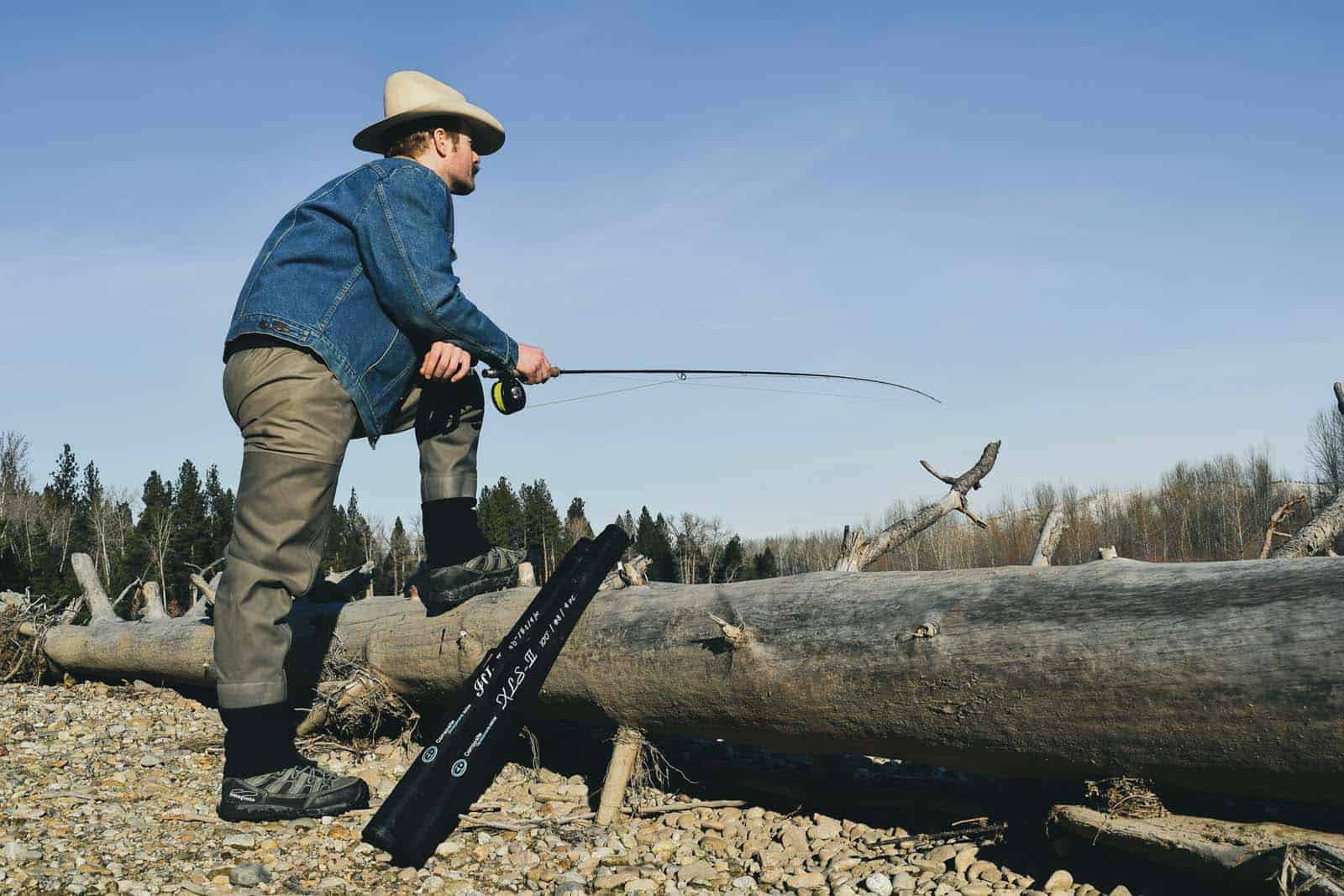Streamer Fishing, Come Hell or High Water

My brother-in-law had just taken the oars when we rounded a bend and approached another boat to find a guide eddied out and re-tying two octogenarian’s dry/dropper rigs. Right in front of their boat my line went tight and a deep bend in the rod ensued. The guide in me was sympathetic for the poor dude on the oars when the elderly lady in the front seat hollered “Oh my God, you’ve got a fish!!!??? What are you using?” That comment strongly suggested that it had been a slow day for them, with the Blackfoot still dropping into fishing shape in late June and the river raging from heavy snowpack and abnormal spring rainfall.
I was, in fact, fishing a weighted streamer on a specialty fly line. Casting and fishing this setup from a boat is not difficult, but it’s not for everyone, and likely, the two sticks in the guide raft would have had a helluva’ time effectively employing this presentation in the torrent. The fish leapt and revealed itself a dandy representative of the species, and my response to her inquiry was intended to squash any notion in her head that she should be following suit. “I’m throwing a heavy streamer on a sink tip, it sucks to cast and this is the first fish we’ve hooked today” (it was the first fish we’d hooked that day on a streamer but I’d only been throwing it for a few minutes and it wouldn’t be the last.)
There are many streamer lines on the market. My preferred line is sold with an intermediate running line and a 30-foot, rapid sinking tip. In high water situations this line gets the fly down much more effectively than a floating line by itself, or a floating line with a sinking tip (which I utilize for streamer fishing at certain times of the year and on smaller, relatively shallow rivers.) I’ve owned and fished streamer lines from several different manufacturers and the designs are similar, with a color change, yellow to gray for instance, denoting the transition between sink rates.

Personally, I like to trim the rapid sinking tip down to 15 feet, I find this length very manageable for fishing and casting and it keeps the fly at the right depth when the oarsman and I are doing our parts. As for those all important pieces to this puzzle, I outlined this in detail in an article that I wrote for American Angler way back in 2008.

You’re probably going to have a hard time tracking down that particular piece of journalism, but the gist is the boat, or the wade angler, should be positioned 40-50 feet from the intended target water, be it the bank, a mid-river shelf, or pocket water, and the fly should be cast at roughly a 45-degree angle. With the rod tip low, strip the fly with long, fast pulls and a definite pause between strips. When there’s a few feet of running line out of the rod tip, pick it up and re-deliver the fly in one cast-false casting is a waste of time, energy, and only leads to problems.
As for flies, I largely rely on 3; a wooly bugger variation called a “Space Invader”, in brown/yellow and brown/olive, and a white bunny fly called “Odessa’s Dreamcatcher” (steps to tying these flies can be found on our Facebook page.) I fish a short, four-foot leader which easily throws a weighted fly. 10-pound fluorocarbon tippet allows for fly movement, holds big fish, and can be broken off without losing fly line or breaking a rod when inevitable snags occur.

The XLS 11 7-weight with a trimmed down streamer express is the ideal setup for consistently presented a moderately weighted streamer pattern in heavy currents. Follow these guidelines and you will put more big trout in your net during high water conditions!


